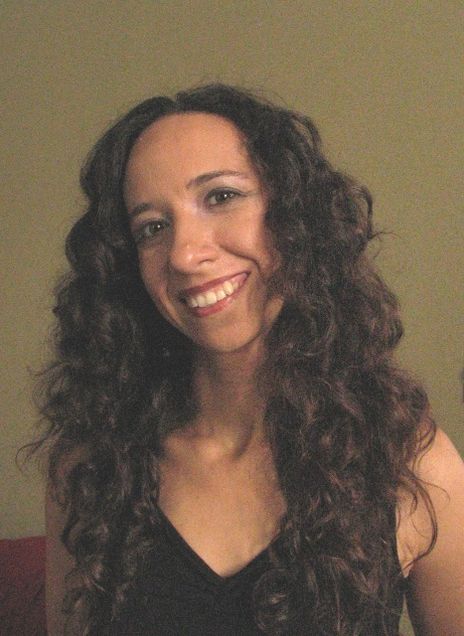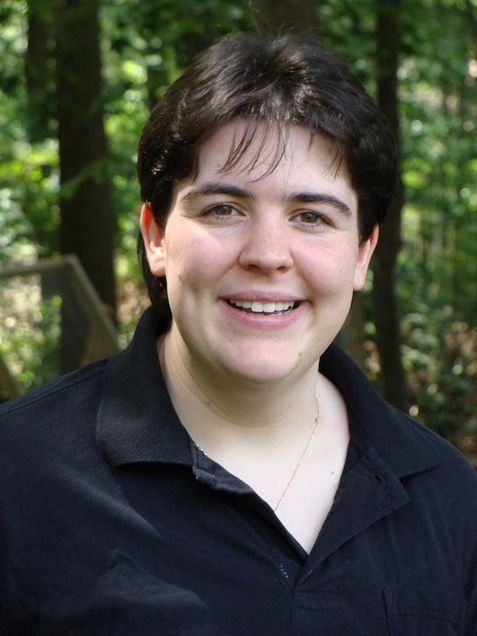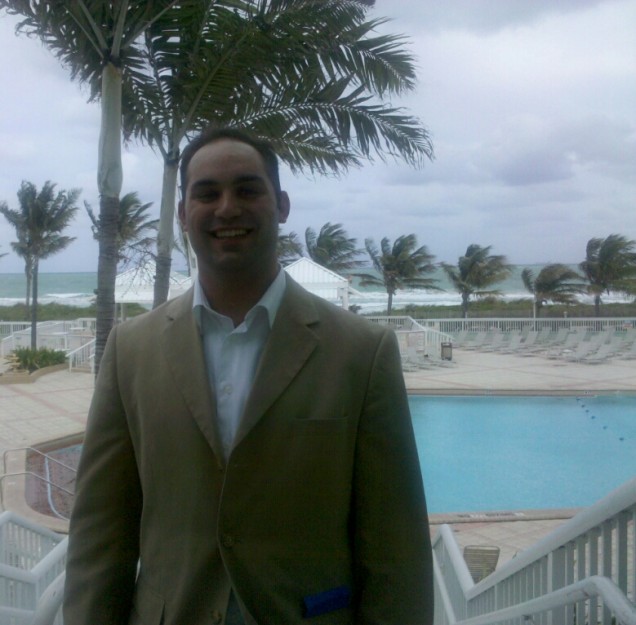Lab Profiles
Return to BMO Member List
Current Members
| Alex Gray |
|
| Alex Gray is a BME PhD student working on developing new techniques for analyzing myelin pathology using birefringence microscopy. He received his BS in Biomedical Engineering from the University of Rhode Island and went on to receive his MS in Biomedical engineering from Boston University. Alex is working on developing novel techniques to analyze and quantify myelin degradation in a rhesus monkey model for cortical injury (stroke) and age-related cognitive decline. The goal of this research is to create a framework for large-scale imaging and quantification of myelin pathology in the context of disease. This will also demonstrate the ability to characterize the efficacy of treatments that target the restoration or regrowth of myelin in disease or following injury. |
|
|
| Anna Novoseltseva |
|
Anna Novoseltseva is a dedicated Ph.D. student in Biomedical Engineering, driven by her passion for advancing medical technologies. With a background in Biotechnical Systems and Technologies, she developed a device for hematoma detection during her undergraduate studies at Tomsk Polytechnic University. Later, she received a Fulbright grant to pursue a Master’s program at Worcester Polytechnic Institute, where she focused on developing a force-feedback device for the da Vinci surgical system. Anna’s industry experience involved working on surgical laser products in research, development, and manufacturing. Currently, under the co-advisement of Dr. David Boas and Dr. Irving Bigio, she investigates myelin degradation in neurodegenerative disorders like Alzheimer’s disease and Chronic Traumatic Encephalopathy, using advanced imaging techniquessuch as polarization-sensitive optical coherence tomography and birefringence microscopy. Her research interest include: Myelin, Alzheimer’s Disease, Chronic Traumatic encephalopathy, Neurophotonics, Polarization-Sensitive Optical Coherence Tomography, Birefringence Microscopy, Biomedical Instrumentation
|
|
|
| Meadow Bradsby |
|
 Meadow Bradsby is a physics PhD student working on using birefringent microscopy to study cerebral arteries and Alzheimer’s disease. She received her BS in engineering physics and MS in applied physics from Colorado School of Mines. Meadow is collaborating with other labs at BU that are studying cerebral arteries using mechanical testing, multiphoton imaging, histology, and mass spectrometry. The goal of this collaboration is to use these experiments and the birefringent structural information to build a more complete understanding of the relationship between cerebral arteries and Alzheimer’s disease. Meadow Bradsby is a physics PhD student working on using birefringent microscopy to study cerebral arteries and Alzheimer’s disease. She received her BS in engineering physics and MS in applied physics from Colorado School of Mines. Meadow is collaborating with other labs at BU that are studying cerebral arteries using mechanical testing, multiphoton imaging, histology, and mass spectrometry. The goal of this collaboration is to use these experiments and the birefringent structural information to build a more complete understanding of the relationship between cerebral arteries and Alzheimer’s disease. |
|
|
|
Recent Alumni
| Nathan Blanke |
 Nate received a BS in Electrical & Computer Engineering from Michigan State University in 2017. He has an interest in neuroscience, and in developing methods for imaging and studying the effects of neurodegenerative diseases. In the Biomedical Optics Lab, Nate developed a birefringence microscopy system for label-free imaging of myelin in brain sections and demonstrated the technique for high-resolution imaging of myelin breakdown in disease. He focuses on studying brain tissues from both humans and nonhuman primates, with birefringence microscopy providing novel insights into the structural organization and integrity of myelin. He received his PhD in 2023. Nate received a BS in Electrical & Computer Engineering from Michigan State University in 2017. He has an interest in neuroscience, and in developing methods for imaging and studying the effects of neurodegenerative diseases. In the Biomedical Optics Lab, Nate developed a birefringence microscopy system for label-free imaging of myelin in brain sections and demonstrated the technique for high-resolution imaging of myelin breakdown in disease. He focuses on studying brain tissues from both humans and nonhuman primates, with birefringence microscopy providing novel insights into the structural organization and integrity of myelin. He received his PhD in 2023. |
|
| Durba Chaudhuri |
|
 Durba came to the USA with a M.Sc in Nanotechnology from University College London, U.K and a B.E in Electronics and Telecommunication from the University of Pune, India. She gained diversified research experience on solar cells, nano antenna materials, microbial load reduction in bio fertilizers, etc., working at the London Center for Nanotechnology, U.K;, the Indian Institute of Technology, India, and the Indian Council of Agriculture Research, India. She joined the Biomedical Optics lab in 2011, and obtained her MS on pharmacokinetic modeling of dyes across the blood brain barrier in 2013. Durba came to the USA with a M.Sc in Nanotechnology from University College London, U.K and a B.E in Electronics and Telecommunication from the University of Pune, India. She gained diversified research experience on solar cells, nano antenna materials, microbial load reduction in bio fertilizers, etc., working at the London Center for Nanotechnology, U.K;, the Indian Institute of Technology, India, and the Indian Council of Agriculture Research, India. She joined the Biomedical Optics lab in 2011, and obtained her MS on pharmacokinetic modeling of dyes across the blood brain barrier in 2013. |
| Carlos Segura |
|
 Carlos Segura, originally from Juarez, Mexico, received his BS in Mechatronics Engineering in 2009 from his hometown campus of the Monterrey Institute of Technology (ITESM). Before joining the Biomedical Optics lab in 2012, he acquired experience in manufacturing and R&D industries, focused mostly on instrumentation, tool and fixture design. He obtained his MS in 2014 on developing a brain-implantable probe with optical and electrical capabilities that can be used to characterize the tissue/electrode interface via optical spectroscopy. Carlos Segura, originally from Juarez, Mexico, received his BS in Mechatronics Engineering in 2009 from his hometown campus of the Monterrey Institute of Technology (ITESM). Before joining the Biomedical Optics lab in 2012, he acquired experience in manufacturing and R&D industries, focused mostly on instrumentation, tool and fixture design. He obtained his MS in 2014 on developing a brain-implantable probe with optical and electrical capabilities that can be used to characterize the tissue/electrode interface via optical spectroscopy. |
| Katherine Calabro |
|
 Originally from Rochester NY, Katherine graduated from Penn State with a BS and a MS in Engineering Science in 2005 and 2006, respectively. When she started at BU in the Fall of 2006, she brought with her a background in Theoretical Electromagnetics and Modeling. In the Biomedical Optics lab, she worked on the development and improvement of mathematical tools such as the Monte Carlo Method to model photon transport in tissue. She completed this work and obtained her Ph.D. in 2012, and now works for Synopsys here in MA developing optical modeling tools. Originally from Rochester NY, Katherine graduated from Penn State with a BS and a MS in Engineering Science in 2005 and 2006, respectively. When she started at BU in the Fall of 2006, she brought with her a background in Theoretical Electromagnetics and Modeling. In the Biomedical Optics lab, she worked on the development and improvement of mathematical tools such as the Monte Carlo Method to model photon transport in tissue. She completed this work and obtained her Ph.D. in 2012, and now works for Synopsys here in MA developing optical modeling tools. |
| Aysegul Ergin |
|
 Aysegul Ergin, originally from Istanbul, Turkey, received her BS degree in Electronics Engineering from Istanbul University and her MS degree in Biomedical Engineering from Bogazici University in Istanbul , Turkey. She received her Ph.D. in Biomedical Engineering from the New Jersey Institute of Technology (NJIT) in 2008. Her PhD research was focused on the development of a laser glucometer, a compact and portable Raman spectroscopy system to detect and quantify glucose concentration in the aqueous humor of the eye to help diabetics. She joined the Biomedical Optics Lab in 2008 as a postdoctoral research associate to work on optical pharmacokinetics, drug extravasation and optical detection of blood-brain barrier disruption in vivo. She completed this work in 2012. Aysegul Ergin, originally from Istanbul, Turkey, received her BS degree in Electronics Engineering from Istanbul University and her MS degree in Biomedical Engineering from Bogazici University in Istanbul , Turkey. She received her Ph.D. in Biomedical Engineering from the New Jersey Institute of Technology (NJIT) in 2008. Her PhD research was focused on the development of a laser glucometer, a compact and portable Raman spectroscopy system to detect and quantify glucose concentration in the aqueous humor of the eye to help diabetics. She joined the Biomedical Optics Lab in 2008 as a postdoctoral research associate to work on optical pharmacokinetics, drug extravasation and optical detection of blood-brain barrier disruption in vivo. She completed this work in 2012. |
| Christine Mulvey |
|
 Christine received an S.B. degree in Engineering Sciences from Harvard University in 2004. Her research with the Biomedical Optics Lab involved the application of elastic scattering spectroscopy to the detection of apoptosis, a type of cell death important in the treatment of cancer using chemotherapy. She obtained her Ph.D. in 2011, after which she accepted a post-doc position at Duke University. Christine received an S.B. degree in Engineering Sciences from Harvard University in 2004. Her research with the Biomedical Optics Lab involved the application of elastic scattering spectroscopy to the detection of apoptosis, a type of cell death important in the treatment of cancer using chemotherapy. She obtained her Ph.D. in 2011, after which she accepted a post-doc position at Duke University. |
| Kurt J. Schoener |
|
 Kurt Schoener received a B.S. in Electrical Computer Engineering and a B.A. in International Affairs in 2002 from Lafayette College in Easton, PA. He completed his Ph.D. in the spring of 2010 with the Biomedical Optics Lab. His doctoral work focused on determining the physiological origins of the intrinsic action potential-modulated birefringence in axons. He showed that the transient electric field of the propagating action potential is responsible for the observed behavior, which he named field-induced changes in birefringence, or FICB. Kurt Schoener received a B.S. in Electrical Computer Engineering and a B.A. in International Affairs in 2002 from Lafayette College in Easton, PA. He completed his Ph.D. in the spring of 2010 with the Biomedical Optics Lab. His doctoral work focused on determining the physiological origins of the intrinsic action potential-modulated birefringence in axons. He showed that the transient electric field of the propagating action potential is responsible for the observed behavior, which he named field-induced changes in birefringence, or FICB. |
 Meadow Bradsby is a physics PhD student working on using birefringent microscopy to study cerebral arteries and Alzheimer’s disease. She received her BS in engineering physics and MS in applied physics from Colorado School of Mines. Meadow is collaborating with other labs at BU that are studying cerebral arteries using mechanical testing, multiphoton imaging, histology, and mass spectrometry. The goal of this collaboration is to use these experiments and the birefringent structural information to build a more complete understanding of the relationship between cerebral arteries and Alzheimer’s disease.
Meadow Bradsby is a physics PhD student working on using birefringent microscopy to study cerebral arteries and Alzheimer’s disease. She received her BS in engineering physics and MS in applied physics from Colorado School of Mines. Meadow is collaborating with other labs at BU that are studying cerebral arteries using mechanical testing, multiphoton imaging, histology, and mass spectrometry. The goal of this collaboration is to use these experiments and the birefringent structural information to build a more complete understanding of the relationship between cerebral arteries and Alzheimer’s disease. Nate received a BS in Electrical & Computer Engineering from Michigan State University in 2017. He has an interest in neuroscience, and in developing methods for imaging and studying the effects of neurodegenerative diseases. In the Biomedical Optics Lab, Nate developed a birefringence microscopy system for label-free imaging of myelin in brain sections and demonstrated the technique for high-resolution imaging of myelin breakdown in disease. He focuses on studying brain tissues from both humans and nonhuman primates, with birefringence microscopy providing novel insights into the structural organization and integrity of myelin. He received his PhD in 2023.
Nate received a BS in Electrical & Computer Engineering from Michigan State University in 2017. He has an interest in neuroscience, and in developing methods for imaging and studying the effects of neurodegenerative diseases. In the Biomedical Optics Lab, Nate developed a birefringence microscopy system for label-free imaging of myelin in brain sections and demonstrated the technique for high-resolution imaging of myelin breakdown in disease. He focuses on studying brain tissues from both humans and nonhuman primates, with birefringence microscopy providing novel insights into the structural organization and integrity of myelin. He received his PhD in 2023.




